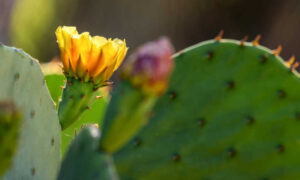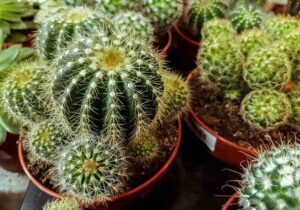Exploring Cactus Fruit: What Lies Beneath the Surface
The cactus fruit, often referred to as prickly pear or tunas, has garnered attention not only for its vibrant color and unique flavor but also for its fascinating structure, which includes both delectable flesh and tiny seeds. The question arises: can one safely consume these cactus fruit seeds? This query invites a deeper inspection of the anatomy of cactus fruit, its consumption, and the overall nutritional attributes that make this desert-dweller a tantalizing prospect in the culinary world.
Understanding the Anatomy: Cactus Fruit Composition
To fully appreciate the qualities of cactus fruit, it is essential to dissect its anatomy. The exterior boasts an array of prickly spikes, characterized by their sharpness, meant for protection against herbivores. Once this outer layer is navigated, one encounters the fleshy interior, which is not only edible but also bursting with moisture, flavor, and nutrients.
The seeds, small and generally crunchy, are dispersed throughout this vibrant pulp and are often a point of contention when discussing consumption. Technically, the seeds of the cactus fruit belong to the family of berries, a fact that adds another layer of intrigue to their classification. The crunchy texture may elicit skepticism, prompting many to ponder whether these seeds pose any health risks or if they can be eaten with abandon.
Nutritional Value: The Goodness Encapsulated in Seeds
Beyond their texture and appearance, cactus fruit seeds possess an array of nutritional benefits that may surpass initial perceptions. They are a source of dietary fiber, which can aid in digestion and promote gut health. Rich in antioxidants, these seeds contribute to fighting oxidative stress within the body, potentially warding off chronic diseases.
Moreover, they contain essential fatty acids, beneficial for maintaining cardiovascular health. The presence of protein is another highlight, making cactus fruit seeds a worthwhile addition to a balanced diet, particularly for those who are seeking plant-based protein sources. The consumption of these seeds in moderation can bolster the overall nutritional profile of the diet.
To Eat or Not to Eat: The Safety of Cactus Fruit Seeds
With the nutritional benefits clear, the next question pertains to safety. Can consuming cactus fruit seeds lead to adverse effects, or are they suitable for most diets? Generally speaking, the seeds are safe to eat for the majority of people. However, caution is advised, particularly for those with specific digestive sensitivities.
Some individuals may find the seeds difficult to digest, leading to discomfort. In such cases, it is best to consume them in moderation or opt for the pulp alone, which offers a smoother texture and highly palatable taste. Pregnant individuals should also approach with caution and consider consulting healthcare professionals, as personal dietary needs may vary widely.
A Culinary Delight: How to Incorporate Cactus Fruit and Seeds in Your Cuisine
Cactus fruit may be enjoyed in various forms—from fresh snacks to vibrant additions to salads and salsas. When it comes to the seeds, creativity thrives. One option is to blend the entire fruit, seeds included, into smoothies, thus reaping the health benefits while enjoying a delicious concoction. Another imaginative avenue lies in creating homemade granola bars or energy bites that integrate both cactus fruit pulp and seeds, allowing a delightful fusion of textures and flavors.
Additionally, the seeds can be roasted for an interesting twist, enhancing their crunch and flavor profile while making them an excellent topping for yogurt or oatmeal. For the adventurous chef, the seeds could also find a place in baked goods, adding a unique crunch to muffins or bread, thereby expanding culinary horizons.
Fascination with Cactus Fruits: A Cultural Perspective
The allure of cactus fruits extends beyond mere nutrition, penetrating cultural and historical narratives as well. Used for centuries by Indigenous peoples, cactus fruits embody resilience, adaptability, and sustenance in challenging climates. Their vibrant appearance and unique flavors have made them a staple in various cuisines around the world, celebrated as both a food source and a symbol of survival. This historical connection imbues cactus fruit and its seeds with a sense of lineage, a taste of natural history that should be cherished.
Conclusion: A Plant Worth Exploring
Cactus fruit seeds present a compelling case for inclusion in the diet, boasting both flavor and beneficial properties. As curiosity about new superfoods heightens, the cactus fruit stands out, not merely as a picturesque dessert staple, but as a powerhouse of nutrition. Through simple culinary creativity and an appreciation for its historical significance, one can elevate ordinary meals while embracing the full spectrum of this remarkable plant. In essence, the cactus fruit, along with its seeds, invites a journey of exploration, enhancing both palates and health alike.





Leave a Comment